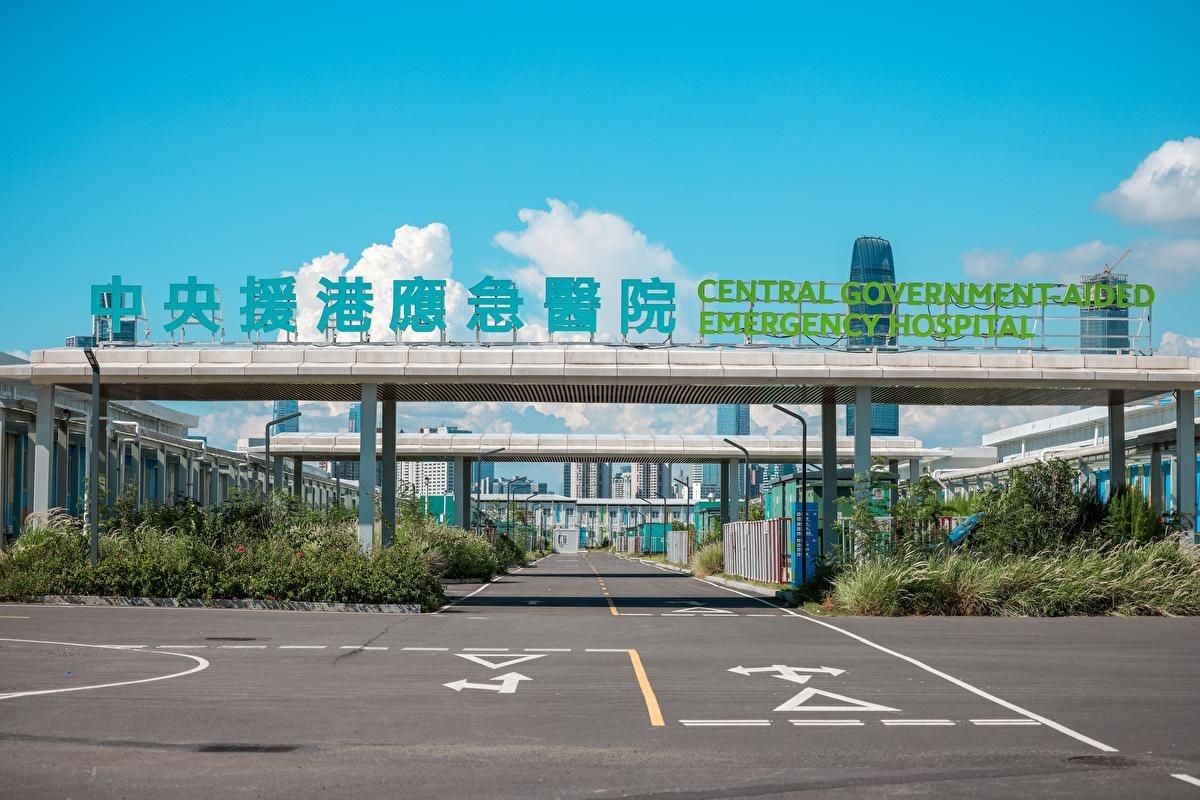 This photo shows a view of the Central Government-Aided Emergency Hospital at Lok Ma Chau Loop on July 11, 2023. (ANDY CHONG / CHINA DAILY)
This photo shows a view of the Central Government-Aided Emergency Hospital at Lok Ma Chau Loop on July 11, 2023. (ANDY CHONG / CHINA DAILY)
A central government-aided hospital built for Hong Kong during the COVID-19 pandemic has strengthened its mission to serve the city’s residents by offering much-needed medical services.
The Central Government-Aided Emergency Hospital, located in Lok Ma Chau, now provides the first overnight sleep test service in public hospitals, as well as ultrasound scans, contrast computerized tomography (CT) services, and magnetic resonance imaging (MRI) scans for patients.
A 68-year-old woman surnamed Lai was among the beneficiaries during the pilot program. Despite her yearslong spinal problems and a recent fall, the soonest Lai could get an MRI appointment was in 2026. This was intolerable for Lai who battled to walk in a straight line.
“I felt relaxed after arriving at the hospital, as the environment is comfortable and relieving. Checkups are also quick and stress-free as in other public hospitals,” Lai said.
Despite living on Hong Kong Island, Lai found the hospital easily accessible thanks to the shuttle bus services offered by the Hospital Authority, which connects the emergency hospital with Sheung Shui, Tuen Mun and Yuen Long.
The hospital was commissioned for construction by the central government in March 2022 to meet healthcare demands in Hong Kong during the COVID-19 pandemic. It was handed over to the Hong Kong Special Administrative Region government on Dec 30 that year.
After the pandemic ended and society returned to normal this year, it led to implementation of the Ambulatory Diagnostic Radiology Service Pilot Programme in April, which aimed at relieving the strain on the city’s public hospitals and addressing patients facing long waits for diagnostic radiology services.
Initially limited to a select patient population, the pilot program expanded three months later to all public hospital patients, offering them diagnostic radiology services.
By mid-November, the hospital had conducted CT or MRI scans on 6,416 patients.
The pilot program cut waiting times for a CT scan from 120 weeks to 36, and those for an MTR scan were reduced from 120 weeks to 49.
Paul Lee Sing-fun, chairman of the coordinating committee in radiology of the Hospital Authority, said the initial goal of the pilot program was to provide such services to nonhospitalized patients between the ages of 12 and 80, who were in a stable condition and enjoyed normal mobility.
Lee said participation in the service is voluntary, and patients can choose to stay at their original hospital.
In view of the positive response from patients, the hospital extended the radiological diagnosis service in October to include the new contrast CT scans and ultrasound scans.
In addition, a diagnostic endoscopy department, a microbiology laboratory, and a sleep test service were put into operation.
Starting next month, the contrast CT service is expected to be extended to all public hospital patients in Hong Kong, with three computerized scanners in full operation.
As for the newly introduced ultrasound contrast services, two ultrasound machines in the hospital will start providing general abdominal and pelvic ultrasound imaging services to all public hospital patients on Dec 12. These will aim to serve 72 patients per week in the initial phase.
Since October, patients have been able to use overnight sleep therapy rooms for sleep tests. These rooms are equipped with adjustable heating and air conditioning, bedrails that prevent patients falling out of bed, and equipment for monitoring vital signs such as electrocardiography and respiratory oxygen levels.
Additionally, patients can contact hospital staff with a call bell in the room, and enjoy the ambience created by a starry sky lighting on the ceiling to improve conditions for sleeping.


